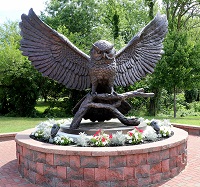Date Approved
3-2016
Document Type
Dissertation
Degree Name
PhD in Cell and Molecular Biology
Department
Cell Biology
College
Graduate School of Biomedical Sciences
Funder
National Institutes of Health (R01 grant to Dmitry Temiakov)
First Advisor
Dmitry Temiakov, PhD
Committee Member 1
Dimitri Pestov, PhD
Committee Member 2
Mikhail Anikin, PhD
Committee Member 3
John Pastorino, PhD
Committee Member 4
William McAllister, PhD
Subject(s)
Genetic Transcription; Transcription Factors; Mitochondria; Transcriptional Regulatory Elements
Disciplines
Cell Biology | Genetic Processes | Genetics and Genomics | Molecular Genetics
Abstract
Mitochondria play a key role in energy metabolism in nearly all eukaryotic cells. Apart from that, they participate in many other biochemical pathways, such as amino acid and nucleotide metabolism, and biosynthesis of cholesterol, heme, and iron-sulfur clusters. Mitochondria are also involved in cell signaling, apoptosis and regulation of cell cycle. Abnormalities of mitochondrial morphology and function are often associated with tumor progression, neurodegeneration and aging.
Mitochondria are unique organelles in mammalian cells because they have their own genomic DNA, transcription and translation systems. Various mutations and defects in mitochondrial gene expression lead to severe diseases that include various mitochondrial myopathies, encephalopathy, lactic acidosis, and stroke syndrome (MELAS). A number of mutations in 16S ribosomal RNA and some tRNAs as well as mutations in nuclear encoded proteins involved in mitochondrial gene expression, are major causes of maternally inherited deafness. Deletion mutations in transcription factor A were found in various cancer cell lines and were linked to defects in mitochondrial DNA expression. However, a detailed understanding of mitochondrial gene expression mechanisms is currently lacking, and would be required to identify potential therapeutic targets for the treatment of a large variety of human disorders.
Mitochondrial genes, encoding subunits of oxidation phosphorylation complexes, ribosomal and transfer RNAs, are transcribed by a single subunit mitochondrial RNA polymerase (mtRNAP), that is distantly related to phage T7 RNAP. MtRNAP requires two transcription factors, TFAM and TFB2M for efficient transcription initiation. TFAM is an abundant mitochondrial protein that compacts mtDNA into a nucleoid structure. TFB2M is required for promoter melting and binding of the priming nucleotide in the active center of mtRNAP. While these factors have been known for years the molecular mechanism of their action was unknown.
In this work we studied the organization and assembly of the human mitochondrial initiation complex, comprised of mtRNAP and transcription initiation factors TFAM and TFB2M. We focused on the role of TFAM in transcription initiation and the order of assembly of the initiation complex. We also aimed at finding a structural basis for promoter recognition and melting during initiation of transcription.
To probe the organization of the human mitochondrial transcription initiation complex we employed site-specific photo cross-linking assays involving proteins having synthetic photo active amino acids, or promoter templates having a photo reactive nucleotide analogue at defined positions. We corroborated the results of the cross-linking experiments using extensive genetic analysis and in vitro transcription assays.
Using protein-protein photo cross-linking, we were first to find that TFAM binds directly to mtRNAP in the presence of DNA. We also demonstrated that TFB2M is dispensable for TFAM-mtRNAP interactions, suggesting that TFAM recruits mtRNAP to the promoter to form a preinitiation complex - a novel intermediate in mitochondrial transcription initiation. Studies of the pre-initiation complex revealed a previously unknown interaction of mtRNAP with the far upstream part of the promoter, suggesting that initiation of transcription requires a substantially larger promoter region than had been previously suggested. We found that TFB2M is unable to bind to mtRNAP efficiently and requires the assembly of a pre-initiation complex, suggesting that binding of TFAM and promoter DNA cause structural changes in mtRNAP. Accurate mapping of the many interactions found in the initiation complex along with available structural data allowed us to build a detailed structural model of the human mitochondrial initiation complex. This model is consistent with all structural, genetic and biochemical data and will be used to guide further experiments.
Overall, the architecture of the mitochondrial initiation complex suggests mechanisms of promoter binding and recognition that are distinct from the mechanisms found in RNAPs operating in all domains of life, and illuminates strategies of transcription regulation developed at the very early stages of evolution of gene expression.
Recommended Citation
Morozov, Yaroslav, "Assembly and Structure of Human Mitochondrial Transcription Initiation Complex" (2016). Graduate School of Biomedical Sciences Theses and Dissertations. 59.
https://rdw.rowan.edu/gsbs_etd/59


